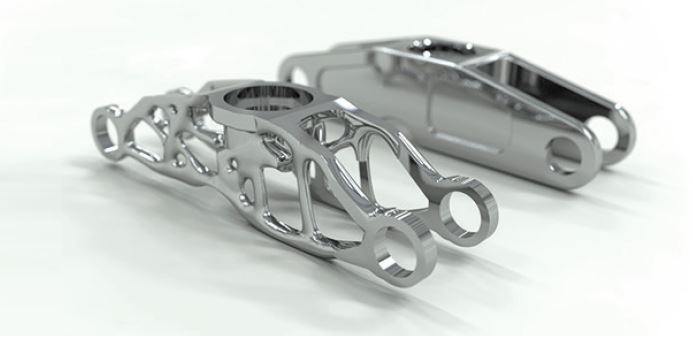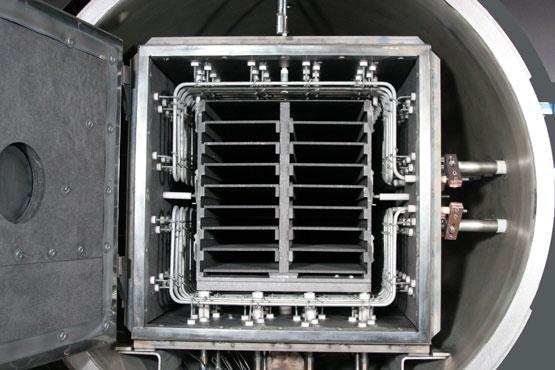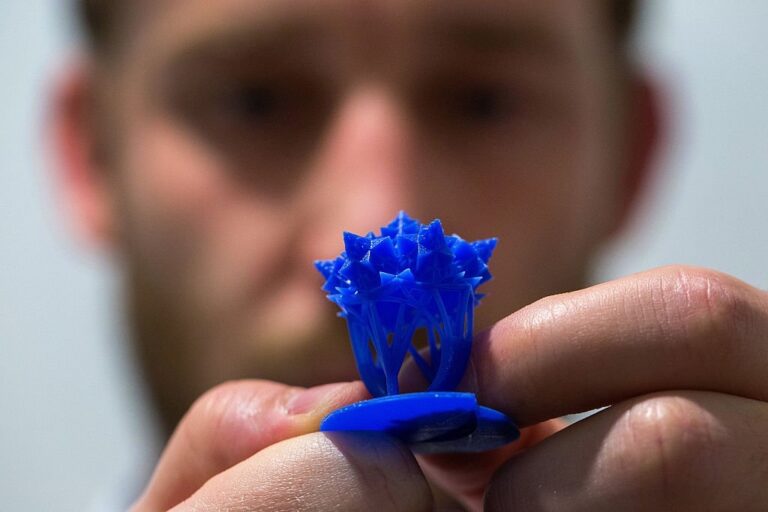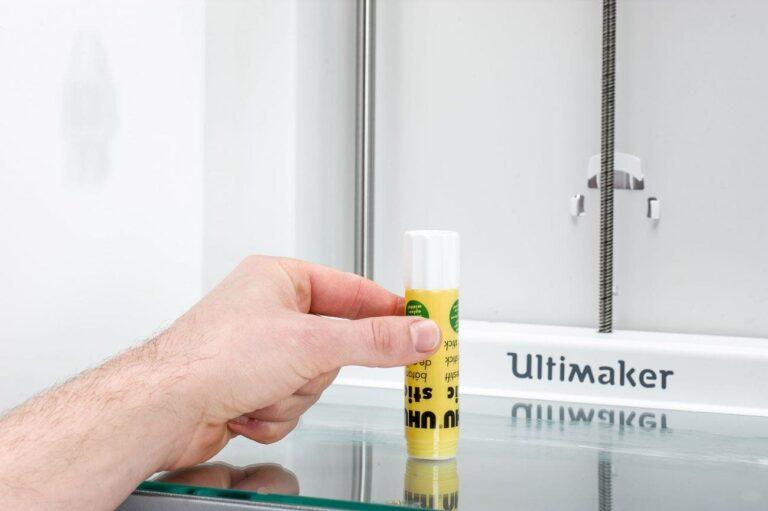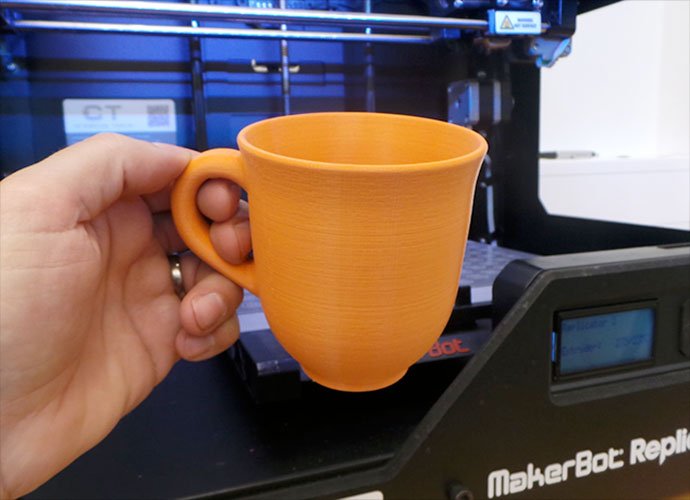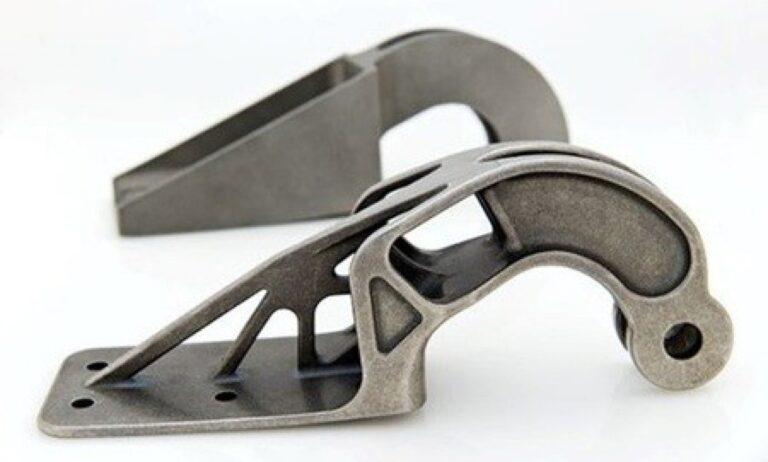The Top 10 3D Print Library You Need to Know About
I. Introduction
A curated collection of digital designs that can be used to manufacture tangible objects using 3D printing technology is known as a 3D print library. The number of 3D print libraries has increased quickly along with 3D printing’s rising popularity. These libraries offer a wide variety of models that may be used by professionals, researchers, and hobbyists alike, saving them time and effort during the design process.
3D print libraries offer free or cheap models for designing and producing objects. Access a variety of information and expertise by using the platform. Libraries have quality control procedures to guarantee printable and user-friendly models. This enhances the effectiveness and dependability of 3D printing.
As we can see, 3D print libraries offer a valuable resource for designers and enthusiasts alike, offering a variety of advantages and chances for cooperation.
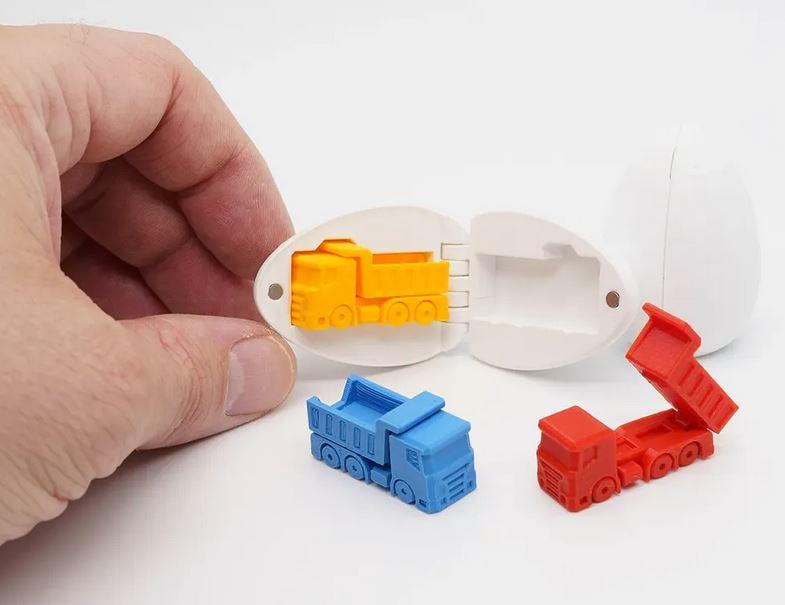
A. Explanation of 3D printing and its growing popularity
Digital files are used in 3D printing technology to produce three-dimensional items. Due to its adaptability and accessibility, it has grown in popularity recently. With the use of 3D printing, both individuals and companies can easily build bespoke parts, prototypes, and even entire items. The development of 3D print libraries as a result has given anyone wishing to use this technology to produce access to a variety of materials.
Moreover, 3D printing has the potential to change a variety of industries, including architecture and healthcare. It is a desirable alternative for many applications since it can produce complicated and customized shapes on demand. The need for 3D print libraries is likely to increase as the technology develops and becomes more widely available.
It is not surprising that 3D print libraries have developed into a useful tool for designers and hobbyists alike given the growing popularity of 3D printing and its potential to alter a variety of sectors.
B. Importance of 3D print libraries
To make 3D printing accessible and affordable for everyone, 3D print libraries are essential. Producing unique 3D prints requires intensive training and a lot of money without libraries. 3D print libraries provide access to a variety of printable designs. Users can access simple domestic items and complex works of art.
Libraries for 3D printing also encourage cooperation and creativity among those involved in 3D printing. Users have the option of sharing their creations with others, which might serve as an inspiration for fresh initiatives. In order to expand the potential of 3D printing technology, they can also collaborate to enhance already existing designs and develop new ones.
As can be seen, 3D print libraries are an important tool for the entire 3D printing community, not just for individual consumers.
C. Overview of the top 10 3D print libraries
Online 3D print libraries abound, but the top 10 stand out for their superiority, breadth, and usability. The most well-known sites, like Thingiverse, MyMiniFactory, and Cults3D, have a large selection of both free and paid designs in many different categories. For people who use Prusa 3D printers or are looking for user-friendly models, PrusaPrinters and Tinkercad are the best options.
Popular options with an emphasis on collaboration and open-source projects include YouMagine, Pinshape, and GrabCAD. NASA 3D Resources library is for space exploration enthusiasts. NIH 3D Print Exchange is for biomedicine-related models. You can find a 3D print library that meets your needs. Interests and 3D printing skill level don’t matter.
Choosing the best 3D print library for your needs might be difficult with so many possibilities accessible. Each of the top 10 3D print libraries will be examined in greater detail in the parts that follow, along with a closer examination of their special qualities and advantages.
II. Thingiverse
Thingiverse is the largest and most popular 3D print library, boasting a vast collection of user-generated and curated models. It offers millions of free 3D printable designs in various categories, from practical objects like phone cases and household items to decorative figurines and intricate sculptures. Thingiverse is an excellent resource for those just starting with 3D printing and looking for inspiration and ideas.
Thingiverse has a large and active community. Users come from all over the world. They share their designs and provide feedback to others. Collaboration and innovation are encouraged on the platform. Many users work together to improve designs. They also create new designs. Thingiverse has a user-friendly interface. It also has a vast collection of designs. Anyone interested in 3D printing should use Thingiverse.
Thingiverse is just one of the many excellent 3D print libraries available online. In the following sections, we will explore some of the other top 3D print libraries, highlighting their unique features and benefits.
A. History and background
MakerBot Industries, a manufacturer of 3D printers and related technology, introduced Thingiverse in 2008. The platform was developed to offer MakerBot customers a library of 3D printable designs, but it quickly expanded to become a well-liked resource for the larger 3D printing community. Stratasys, a well-known supplier of 3D printing solutions, purchased Thingiverse in 2013.
Thingiverse has grown since it first went live with new features and categories added regularly. It’s the biggest and most well-liked 3D print library today with millions of users and designs. Thingiverse’s dedication to community-driven design is a major factor in the platform’s success.
The origins and history of Thingiverse shed light on its development and popularity. We’ll look at a few of the features and benefits that make Thingiverse such an important tool for the 3D printing community in the next section.
B. Features and benefits
Thingiverse offers a range of features and benefits that make it an essential resource for 3D printing enthusiasts. The vast collection of free 3D printable designs is a key benefit. Designs are user-generated and curated for quality. The library offers categories like art, fashion, home decor, and technology. Users can easily find models that suit their interests and needs.
Another feature that sets Thingiverse apart is its community-driven approach to design. Users can collaborate and share their designs with others, providing a platform for feedback and improvement. This not only fosters innovation within the 3D printing community but also helps to ensure that the models on Thingiverse are of high quality and printable.
Thingiverse’s features and benefits demonstrate why it is such a valuable resource for 3D printing enthusiasts. In the following sections, we will explore some of the other top 3D print libraries, highlighting their unique features and benefits.
C. Popular categories and models
Thingiverse offers a wide range of categories and models that cater to the interests and needs of a diverse group of users. Popular categories on the platform include technology, home and garden, and toys and games. Within these categories, users can find thousands of unique designs, such as phone cases, planters, and puzzles.
“Thingiverse” is popular for the “Benchy” model, a 3D-printable boat. It is often used to test 3D printers. Other popular models include the “Raspberry Pi case” and “Egg-Bot.” Thingiverse has a variety of models and categories. It is an excellent resource for both beginners and experienced 3D printing enthusiasts.
The popularity of Thingiverse’s categories and models highlights the platform’s appeal to a broad audience. In the following sections, we will explore some of the other top 3D print libraries, highlighting their unique features and benefits.
III. MyMiniFactory
Popular 3D print library MyMiniFactory distinguishes itself by emphasizing quality control and carefully selected content. Unlike other libraries, MyMiniFactory has a team of skilled designers who examine and optimize each model before it is added to the platform. This ensures that all models are of good quality and printable, saving consumers time and frustration.
MyMiniFactory is also distinguished by its dedication to supporting the work of independent designers. The site is a great resource for designers wishing to monetize their work because it provides a revenue-sharing program that enables designers to make money from their designs. MyMiniFactory also provides a variety of tools and resources for designers, including access to statistics and marketing assistance.
A. History and background
MyMiniFactory was founded in 2013 by designers and 3D printing enthusiasts. They were unhappy with the quality control in other 3D print libraries. The site offers carefully chosen designs enhanced for quality and usability. With millions of users and a stellar reputation, MyMiniFactory is currently one of the most widely used 3D print libraries.
The success of MyMiniFactory is largely attributable to its emphasis on quality assurance and user satisfaction. A skilled design team optimizes and reviews each model added to the library. Users can quickly find high-quality and printing-optimized models. This saves them time and effort during the design process. MyMiniFactory is a valuable resource for the 3D printing community. It is dedicated to quality and user experience.
MyMiniFactory’s history and past reveal its dedication to quality and the customer experience. We’ll examine a few more of the Features and benefits of Myminifactory.
B. Features and benefits
MyMiniFactory offers a range of features and benefits that make it an attractive option for 3D printing enthusiasts. One of the key features is its curated collection of high-quality models. MyMiniFactory has experienced designers who review and optimize models before adding them to the library. This ensures user-friendly and quality designs. Users can easily find printable models.
Another benefit of MyMiniFactory is its support for independent designers. The platform offers a revenue-sharing program that allows designers to earn money from their designs, making it an excellent resource for designers looking to monetize their work. MyMiniFactory also offers a range of tools and resources for designers, including access to analytics and marketing support.
MyMiniFactory’s features and benefits demonstrate why it is such a valuable resource for 3D printing enthusiasts. In the following sections, we will explore the Quality control process and curated content of Myminifactory.
C. Quality control process and curated content
MyMiniFactory’s quality control process and curated content are two of its standout features. Every model on the platform undergoes a rigorous review process by the platform’s team of experienced designers. This ensures that all models are optimized for quality and user-friendliness, with any potential issues or errors addressed before they are added to the library. As a result, users can trust that every model on MyMiniFactory is printable and of high quality.
In addition to its quality control process, MyMiniFactory’s curated content is another benefit for users. The platform offers a wide variety of categories, including art, fashion, and home decor, with models that are carefully selected and optimized for printing. This makes it easy for users to find high-quality, printable designs in the categories that interest them. With its focus on quality control and curated content, MyMiniFactory is an excellent resource for anyone looking to explore the world of 3D printing.
MyMiniFactory emphasizes quality control and curated content for 3D printing community resources.
We’ll examine other top 3D print libraries and their distinct advantages and features.
IV. Cults3D
Cults3D is a 3D print library that offers a vast collection of high-quality, user-generated designs. The Cults3D prioritizes innovation and creativity. It’s ideal for exploring unique and cutting-edge designs. The library features multiple categories, such as art, jewelry, and architecture. Users can easily find designs that match their interests and requirements.
One of the standout features of Cults3D is its emphasis on community-driven design. The platform has a large and active community of designers and users who collaborate and share their knowledge and expertise. This creates a supportive and innovative environment that fosters creativity and growth within the 3D printing community. With its commitment to community-driven design and innovation, Cults3D is an essential resource for anyone interested in exploring the possibilities of 3D printing.
Cults3D’s focus on innovation and community-driven design make it a valuable resource for 3D printing enthusiasts. In the following sections, we will explore some of the other top 3D print libraries, highlighting their unique features and benefits.
A. History and background
A group of designers and engineers with a love for 3D printing started Cults3D in 2014. The platform was developed to offer a library of excellent, user-generated designs that were well-suited for printing. With millions of users and a reputation for originality and creativity, Cults3D has grown to become one of the most well-known 3D print libraries today.
The success of Cults3D can be attributed in large part to its emphasis on community-driven design. The platform has a vibrant community of designers and users who share skills and experience. A varied library of 3D printable designs resulted from this community. New and creative ideas are constantly being added to the library. Cults3D is a significant resource for 3D printing aficionados worldwide. The platform is dedicated to community-driven design and innovation.
Cults3D’s history and background reveal its dedication to community-driven design and innovation. In the sections that follow, we’ll examine Features and benefits and a Mix of free and paid models and various categories
B. Features and benefits
Cults3D is great for 3D printing enthusiasts. It offers many features and advantages. One of its main characteristics is an extensive library of user-generated designs. Users can find unique and innovative models in numerous categories. Cults3D has over a million designs available. The focus on innovation and creativity means cutting-edge designs are common.
The dedication of Cults3D to community-driven design is another advantage. A sizable and vibrant community of designers and users cooperate and share information and skills on the platform. This supports innovation and growth within the 3D printing community by creating a positive and encouraging environment. Cults3D is a great resource for designers wishing to commercialize their work because it provides a variety of tools and resources for them, such as analytics and marketing assistance.
Cults3D’s features and advantages show why it is such a useful resource for fans of 3D printing. We’ll examine a Mix of free and paid models and various categories of Cults3D
C. Mix of free and paid models and various categories
With its distinctive combination of free and premium models, Cults3D is affordable for users of all financial means. The platform provides a significant collection of free models as well as premium models that users can buy. This gives customers access to premium, high-quality designs and enables creators to make money off of their work. Users may anticipate finding a vast selection of designs in a wide number of categories, from art and fashion to technology and home décor, thanks to Cults3D’s dedication to community-driven design.
The focus Cults3D places on original and creative designs are one of its most notable characteristics. Cults3D emphasizes originality and creativity. It’s perfect for experimenting with cutting-edge designs. The platform offers a diverse category collection. Users can easily find designs that fit their interests and needs. Cults3D is an essential resource for 3D printing enthusiasts. It offers a mix of free and paid models. Cults3D focuses on innovation and pushing boundaries.
Cults3D offers a great resource for people interested in 3D printing. It combines free and paid models and commits to innovation and creativity. We’ll examine a few more of the best 3D print libraries in the sections that follow, emphasizing their distinctive qualities and advantages.
V. PrusaPrinters
A. History and background
Prusa Research, a Czech-based 3D printing company, created PrusaPrinters, a 3D print library. The platform launched in 2018 to offer a dedicated space for Prusa users to share and collaborate on 3D printing projects. Since its launch, PrusaPrinters has grown into a thriving community-driven platform that offers a wide range of user-generated designs.
B. Features and benefits
One of the standout features of PrusaPrinters is its focus on user experience. The platform has a clean and easy-to-use interface that makes it easy for users to find and download models. Additionally, PrusaPrinters offers a range of tools and resources for designers, including access to analytics and marketing support. This makes it an excellent resource for designers looking to monetize their work and for users looking for high-quality, user-generated designs.
C. Community-driven platform and growing library
PrusaPrinters is a community-driven platform that emphasizes collaboration and creativity. The platform has a large and active community of designers and users who share their knowledge and expertise. This creates a supportive and innovative environment that fosters creativity and growth within the 3D printing community. Additionally, PrusaPrinters’ library is constantly growing, with new models added every day. This makes it an essential resource for anyone interested in the world of 3D printing.
PrusaPrinters’ focus on user experience, community-driven design, and growing library make it a valuable resource for 3D printing enthusiasts. In the following sections, we will explore some of the other top 3D print libraries, highlighting their unique features and benefits.
VI. Tinkercad
A. History and background
The top software provider in the design sector, Autodesk, developed the 3D print library known as Tinkercad. The website was introduced in 2011 as a free, beginner-friendly 3D modeling tool. Since its debut, Tinkercad has gained popularity among designers of all experience levels and developed into a flourishing community-driven platform.
B. Features and benefits
Tinkercad’s simplicity of usage is one of its best qualities. Users may easily create and alter 3D models on the site because of its user-friendly interface. In addition, Tinkercad gives designers access to a vast library of models and design challenges, among other tools and resources. This makes it a great tool for consumers trying to improve their 3D modeling abilities and for designers looking to showcase their creations.
C. Large library of 3D printable models
A sizable collection of 3D printable models are available in Tinkercad, including works made by both seasoned designers and users of the program. The platform makes it simple for users to locate designs that meet their interests and needs by providing a wide range of categories, including art, home decor, and technology. Tinkercad’s library is also continually expanding, with new models being added every day. Because of this, it is a crucial tool for everyone interested in the field of 3D printing.
Tinkercad is a useful tool for those interested in 3D printing because of its simplicity of use, community-driven design, and an extensive collection of 3D printable models. We’ll examine a few more of the best 3D print libraries in the sections that follow, emphasizing their distinctive qualities and advantages.
VII. YouMagine
A. History and background
One of the top 3D printing companies, Ultimaker, developed the YouMagine 3D print library. In order to give designers and manufacturers a place to showcase their work and work together on 3D printing projects, the platform was established in 2013. Since its inception, YouMagine has developed into a vibrant, user-driven website that provides a huge selection of top-notch 3D printable models.
B. Features and benefits
YouMagine’s emphasis on quality and collaboration is one of its most notable characteristics. Before any models can be made available to users, they must first be reviewed and approved by a staff of curators on the platform. Users can rely on the quality of the models on the platform thanks to this. YouMagine also places a lot of emphasis on open-source initiatives and teamwork. This supports innovation and growth within the 3D printing community by creating a positive and encouraging environment.
C. Focus on open-source projects and collaboration
YouMagine appeals to 3D printing aficionados with its variety of features and advantages. The site features a sizable and varied library of 3D printable models, including designs made by both seasoned designers and users of the YouMagine community. YouMagine also gives designers access to statistics and marketing assistance, among other tools and services. This makes it a fantastic resource for both users looking for high-quality, user-generated designs and creators looking to monetize their work.
YouMagine is a great resource for people interested in 3D printing because of its emphasis on quality, collaboration, and open-source projects. We’ll examine a few more of the best 3D print libraries in the sections that follow, emphasizing their distinctive qualities and advantages.
VIII. Pinshape
A. History and background
Pinshape is a 3D print library that was launched in 2014. The platform was created by a team of 3D printing enthusiasts who wanted to provide a space for designers and makers to share and collaborate on 3D printing projects. Since its launch, Pinshape has become a popular choice for designers and users of all skill levels and has grown into a thriving community-driven platform.
B. Features and benefits
One of the standout features of Pinshape is its mix of free and paid models. The platform offers a range of models, from free designs created by members of the community to paid models created by professional designers. Additionally, Pinshape offers a wide range of categories, including art, fashion, and technology, making it easy for users to find designs that suit their interests and needs.
C. Mix of free and paid models and various categories
Pinshape offers a range of features and benefits that make it an attractive option for 3D printing enthusiasts. The platform has a large and diverse library of 3D printable models, with new models added every day. Additionally, Pinshape offers a range of tools and resources for designers, including access to analytics and marketing support. This makes it an excellent resource for designers looking to monetize their work and for users looking for high-quality, user-generated designs.
Pinshape’s mix of free and paid models and wide range of categories make it a valuable resource for 3D printing enthusiasts. In the following sections, we will explore some of the other top 3D print libraries, highlighting their unique features and benefits.
IX. NIH 3D Print Exchange
A. History and background
The NIH 3D Print Exchange is a 3D print library that was created by the National Institutes of Health (NIH), one of the leading medical research organizations in the world. The platform was launched in 2014 as a way to provide a space for researchers and medical professionals to share 3D printable models that are related to biomedical research. Since its launch, the NIH 3D Print Exchange has become a valuable resource for researchers and medical professionals around the world.
B. Features and benefits
One of the standout features of the NIH 3D Print Exchange is its collection of biomedical-related models. The platform offers a range of models that are related to a wide range of medical research topics, including anatomy, cell biology, and pathology. Additionally, the platform has a team of curators who review and approve all models before they are made available to users. This ensures that users can trust the accuracy and quality of the models on the platform.
C. Collection of biomedical-related models
The NIH 3D Print Exchange offers a range of features and benefits that make it an attractive option for medical professionals and researchers. The platform has a large and diverse library of 3D printable models, including designs created by both professional designers and members of the NIH community. Additionally, the platform offers a range of tools and resources for users, including access to tutorials and educational resources. This makes it an excellent resource for researchers looking to explore the potential of 3D printing in the field of biomedicine.
The NIH 3D Print Exchange’s collection of biomedical-related models and focus on accuracy make it a valuable resource for medical professionals and researchers. In the following sections, we will explore some of the other top 3D print libraries, highlighting their unique features and benefits.
X. GrabCAD
A. History and background
GrabCAD is a 3D print library that was launched in 2010. The platform was created by a team of engineers who wanted to provide a space for designers and engineers to collaborate on 3D printing projects. Since its launch, GrabCAD has become a popular choice for engineers and designers of all skill levels and has grown into a thriving community-driven platform.
B. Features and benefits
One of the standout features of GrabCAD is its community of engineers and designers. The platform offers a range of models that are related to various industries, including aerospace, automotive, and industrial design. Additionally, GrabCAD has a strong focus on collaboration, making it easy for users to share and work on 3D printing projects with others.
C. Community of engineers and designers and various industries
GrabCAD offers a range of features and benefits that make it an attractive option for 3D printing enthusiasts. The platform has a large and diverse library of 3D printable models, with new models added every day. Additionally, GrabCAD offers a range of tools and resources for designers, including access to tutorials and design challenges. This makes it an excellent resource for designers looking to develop their skills and connect with others in the 3D printing community.
GrabCAD’s community of engineers and designers and focus on collaboration make it a valuable resource for 3D printing enthusiasts. In the following sections, we will explore some of the other top 3D print libraries, highlighting their unique features and benefits.
XI. NASA 3D Resources
A. History and background
NASA 3D Resources is a 3D print library that was created by NASA, the United States space agency. The platform was launched in 2013 as a way to provide a space for enthusiasts to access and print 3D models related to NASA’s work in space exploration. Since its launch, the NASA 3D Resources platform has become a valuable resource for space enthusiasts, educators, and researchers around the world.
B. Features and benefits
One of the standout features of NASA 3D Resources is its collection of space-related models. The platform offers a range of models that are related to NASA’s work, including models of spacecraft, rovers, and scientific instruments. Additionally, the platform has a team of curators who review and approve all models before they are made available to users. This ensures that users can trust the accuracy and quality of the models on the platform.
C. Collection of space-related models
NASA 3D Resources offers a range of features and benefits that make it an attractive option for space enthusiasts and educators. The platform has a large and diverse library of 3D printable models, with new models added on a regular basis. Additionally, NASA 3D Resources offers a range of educational resources and tools for educators, including lesson plans and activities that can be used to teach students about space exploration and the importance of 3D printing in the field.
NASA 3D Resources’ collection of space-related models and educational resources make it a valuable resource for space enthusiasts and educators.
XII. Conclusion
In conclusion, 3D print libraries provide a multitude of tools and advantages for amateurs, teachers, and experts alike. There is a 3D print library for everyone, ranging from user-driven resources like Thingiverse and MyMiniFactory to more specialist ones like NASA 3D Resources and NIH 3D Print Exchange.
These platforms are invaluable resources for anyone interested in 3D printing since they provide access to thousands of high-quality 3D printable models, educational materials, and tools. We may anticipate even more inventive and fascinating advancements in the field of 3D print libraries as technology continues to advance. Exploring these platforms offers apparent advantages for hobbyists, educators, and business professionals alike, making 3D print libraries an important resource in the 3D printing sector.
By making use of these 3D print libraries, fans and experts can benefit from the abundance of resources offered and keep expanding the realm of what is practical for 3D printing.
A. Recap of the top 10 3D print libraries
To recap, we have explored the top 10 3D print libraries, each offering a unique set of features and benefits. Thingiverse, the largest and most well-known platform, provides a massive library of user-generated content and a strong community focus. MyMiniFactory boasts a curated library of high-quality models and a commitment to quality control. Cults3D offers a mix of free and paid models, with a wide range of categories to choose from.
Tinkercad is a beginner-friendly platform with a large library of models and a focus on simplicity. YouMagine prioritizes open-source projects and collaboration, while Pinshape offers a mix of free and paid models with a variety of categories. NIH 3D Print Exchange focuses on biomedical-related models, while GrabCAD has a community of engineers and designers spanning various industries. Lastly, NASA 3D Resources offers a collection of space-related models and educational resources.
With these top 10 3D print libraries, there is no shortage of resources and tools available to 3D printing enthusiasts and professionals. By utilizing these platforms, individuals can take advantage of the wealth of knowledge and experience within the community, and continue to push the boundaries of what is possible with 3D printing.
B. Final thoughts on the importance of 3D print libraries for 3D printing and design
In conclusion, 3D print libraries are essential to the fields of design and 3D printing. These platforms include a plethora of materials, including instructional tools, tutorials, top-notch 3D models, and design templates. They offer a venue for community collaboration and knowledge exchange, which is crucial for fostering innovation and advancement in this area.
People can shorten their learning curve, improve their workflow, and profit from the community’s collective knowledge by utilizing the advantages of these 3D print libraries. A significant resource that can assist you in achieving your objectives and extending the realm of what is practical with 3D printing is a 3D print library, whether you are a hobbyist, instructor, or business professional.
As technology advances and new ideas arise, we may anticipate seeing even more fascinating breakthroughs in the field of 3D print libraries, further reaffirming their significance for the growth of 3D printing and design.
C. Future outlook on the growth and evolution of 3D print libraries
Future trends suggest that 3D print libraries will likely continue to develop and grow quickly. The demand for high-quality, easily available 3D models and design resources will only rise as more people and businesses adopt 3D printing. We may anticipate the emergence of increasingly more specialized 3D print libraries that serve particular markets and sectors.
We can also anticipate the development of 3D print libraries as 3D printing technology progresses. This could include brand-new functions like 3D model previews in augmented reality (AR) or virtual reality (VR), stronger quality assurance procedures, or even the incorporation of artificial intelligence (AI) and machine learning algorithms to improve the user experience.
In conclusion, the future of 3D print libraries is promising and has the ability to completely alter how we manufacture, develop, and innovate in the years to come. It’s critical to keep up with the newest advances in the industry as it develops and to make use of new tools and resources as they become available.
How to search for and download 3D models from a 3D print library?
- Choose a 3D print library
Start by selecting a 3D print library that offers the types of models you’re interested in, such as Thingiverse or MyMiniFactory.
- Search for a model
Once you’re on the library’s website, use the search function to look for a specific type of model or keyword. You can also browse through categories or collections to find models that fit your needs.
- Preview the model
Click on a model that catches your eye to view its details, including images and information about its size, complexity, and recommended print settings.
- Download the model
If you’re happy with the model and want to print it, click the download button to save the file to your computer. Some libraries may require you to create an account or log in to download models.
- Prepare the model for printing
Once you’ve downloaded the model, use slicing software such as Cura or Simplify3D to prepare it for printing. This includes selecting the appropriate print settings, generating a G-code file, and transferring it to your 3D printer.
FAQs
Yes, most 3D print libraries are free to use and offer a vast collection of free 3D models to download and print.
Yes, many 3D print libraries allow users to upload and share their own 3D models, which can be a great way to showcase your designs and get feedback from the community.
Most 3D models on 3D print libraries are compatible with a range of 3D printers, but it’s important to check the recommended print settings and make any necessary adjustments for your specific printer.
If you can’t find the exact 3D model you’re looking for, you can try adjusting your search terms or browsing through different categories or collections. Alternatively, you can create your own 3D model using free design software such as Tinkercad or Fusion 360.
Most 3D print libraries include reviews and ratings from other users, which can give you an idea of the quality and usability of a particular model. You can also look for models with detailed descriptions and images to help assess their quality.

